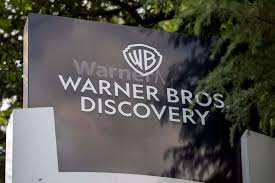
Warner Bros. Discovery this week secured overwhelming support from its bondholders to proceed with a two‑company separation designed primarily to alleviate its more than $38 billion debt burden. Under the plan, the legacy cable and linear networks—including CNN, TNT and Discovery-branded channels—will be consolidated into one publicly traded entity, while a second company will house the studios, HBO Max streaming service and other digital entertainment assets. Executives describe the split as a necessary step to unlock trapped value, improve each business’s credit profile and free up capital for strategic investments.
The decision follows a series of credit downgrades by S\&P Global, Moody’s and Fitch in recent months. Concerns over restrictive debt covenants—put in place after the 2022 merger of WarnerMedia and Discovery—had limited the combined company’s ability to repurchase debt or deploy cash toward content and technology. By loosening these covenants, Warner Bros. Discovery gains the flexibility to buy back roughly $15 billion of its highest‑cost bonds, reducing overall leverage and laying the groundwork for two more financially independent units. The bondholder vote, held earlier this week, saw more than 90 percent support across all debt classes, signaling investor confidence in management’s plan to recalibrate the capital structure.
Focused Operations Boost Growth Prospects
Separating the streaming and studio operations from the mature cable business will allow each entity to pursue tailored strategies in a rapidly evolving media landscape. The newly formed “Streaming & Studios” company will be led by Warner Bros. Discovery CEO David Zaslav, who has championed a content-driven growth model since the merger. With HBO Max subscriber numbers plateauing against heavy competition from Netflix, Disney+ and Amazon Prime Video, the standalone unit can direct cash flows more aggressively into original series, blockbuster film franchises and targeted marketing initiatives. Freed from the drag of legacy network liabilities, it also gains the ability to forge partnerships, explore dynamic pricing models and consider bolt‑on acquisitions without cross‑divisional constraints.
Meanwhile, the “Global Networks” business—under the stewardship of former CFO Gunnar Wiedenfels—will concentrate on optimizing linear television cash flows. This unit inherits the lion’s share of existing debt and will focus on margin enhancement through channel portfolio rationalization, distribution fee negotiations and bundled offerings alongside the in‑demand Discovery+ streaming service. Analysts note that by isolating the cable assets, Warner Bros. Discovery can more transparently showcase the stable, cash‑generative nature of traditional networks, making the business more appealing to conservative investors seeking dividend income and predictable earnings.
Financial Framework and Bondholder Response
To facilitate the carve‑out and initial working capital needs, the company has secured a $17 billion bridge loan led by JPMorgan Chase. Structured as non‑recourse to each standalone unit, the financing will underwrite the planned bond repurchases and ensure liquidity through the transaction period. Executives emphasize that this approach preserves the autonomy of both entities, allowing them to pursue separate credit ratings and capital markets access once the separation is finalized.
Investor reaction has been cautiously optimistic. Warner Bros. Discovery’s share price dipped on initial rumors of the split but recovered modestly following public bondholder approval. Hedge funds and institutional investors, compelled to sell investment‑grade debt after recent junk‑rating downgrades, have gradually been replaced by buyers betting on improved operational clarity. However, some holders of unsecured, lower‑tier bonds tied to the cable business continue to voice concerns. They warn that subordinate status and reduced collateral protections could impair recovery rates in a downside scenario. Legal challenges brought by a small group of dissenting creditors were dismissed late last week, cementing the company’s path forward but leaving pockets of skepticism among fixed‑income investors.
Industry Implications and Future Milestones
Warner Bros. Discovery’s maneuver underscores a broader trend in the media industry: large conglomerates are increasingly considering strategic splits to sharpen focus and enhance shareholder value. Paramount Global and Viacom completed similar carve‑outs this year, with mixed results. In each case, specialized businesses outperformed broad‑based peers over short time horizons but faced pressure to sustain growth without the safety net of diversified revenue streams.
As bondholders finalize tenders by the June 23 deadline, Warner Bros. Discovery will shift attention to shareholder ratification in the autumn. Proxy materials will outline governance structures, initial balance sheets and leadership rosters for both companies. Upon approval, the two entities are slated to begin trading separately on the New York Stock Exchange under new ticker symbols, each governed by its own board of directors and strategic roadmap.
Leadership transitions are already being mapped: David Zaslav will oversee the Streaming & Studios unit, with a focus on accelerating content investment and navigating the cut‑throat streaming wars. Gunnar Wiedenfels will assume the helm at Global Networks, charged with delivering steady cash generation and driving operational efficiencies in linear television. Employees across both divisions have been briefed on organizational changes, with minimal layoffs projected as roles are reassigned to fit the narrower business scopes.
Analysts and investors alike will be watching closely for early performance indicators. For Streaming & Studios, subscriber growth rates, churn metrics and content spend ratios will serve as barometers of competitiveness. For Global Networks, advertising revenue trends, distribution fee renewals and international carriage deals will provide insight into the health of traditional media. The split’s success—or failure—will hinge on the ability of each standalone company to execute its distinct strategy, navigate capital markets independently and deliver on the promise of enhanced shareholder returns without the encumbrance of conglomerate complexity.
(Source:www.marketscreener.com)
The decision follows a series of credit downgrades by S\&P Global, Moody’s and Fitch in recent months. Concerns over restrictive debt covenants—put in place after the 2022 merger of WarnerMedia and Discovery—had limited the combined company’s ability to repurchase debt or deploy cash toward content and technology. By loosening these covenants, Warner Bros. Discovery gains the flexibility to buy back roughly $15 billion of its highest‑cost bonds, reducing overall leverage and laying the groundwork for two more financially independent units. The bondholder vote, held earlier this week, saw more than 90 percent support across all debt classes, signaling investor confidence in management’s plan to recalibrate the capital structure.
Focused Operations Boost Growth Prospects
Separating the streaming and studio operations from the mature cable business will allow each entity to pursue tailored strategies in a rapidly evolving media landscape. The newly formed “Streaming & Studios” company will be led by Warner Bros. Discovery CEO David Zaslav, who has championed a content-driven growth model since the merger. With HBO Max subscriber numbers plateauing against heavy competition from Netflix, Disney+ and Amazon Prime Video, the standalone unit can direct cash flows more aggressively into original series, blockbuster film franchises and targeted marketing initiatives. Freed from the drag of legacy network liabilities, it also gains the ability to forge partnerships, explore dynamic pricing models and consider bolt‑on acquisitions without cross‑divisional constraints.
Meanwhile, the “Global Networks” business—under the stewardship of former CFO Gunnar Wiedenfels—will concentrate on optimizing linear television cash flows. This unit inherits the lion’s share of existing debt and will focus on margin enhancement through channel portfolio rationalization, distribution fee negotiations and bundled offerings alongside the in‑demand Discovery+ streaming service. Analysts note that by isolating the cable assets, Warner Bros. Discovery can more transparently showcase the stable, cash‑generative nature of traditional networks, making the business more appealing to conservative investors seeking dividend income and predictable earnings.
Financial Framework and Bondholder Response
To facilitate the carve‑out and initial working capital needs, the company has secured a $17 billion bridge loan led by JPMorgan Chase. Structured as non‑recourse to each standalone unit, the financing will underwrite the planned bond repurchases and ensure liquidity through the transaction period. Executives emphasize that this approach preserves the autonomy of both entities, allowing them to pursue separate credit ratings and capital markets access once the separation is finalized.
Investor reaction has been cautiously optimistic. Warner Bros. Discovery’s share price dipped on initial rumors of the split but recovered modestly following public bondholder approval. Hedge funds and institutional investors, compelled to sell investment‑grade debt after recent junk‑rating downgrades, have gradually been replaced by buyers betting on improved operational clarity. However, some holders of unsecured, lower‑tier bonds tied to the cable business continue to voice concerns. They warn that subordinate status and reduced collateral protections could impair recovery rates in a downside scenario. Legal challenges brought by a small group of dissenting creditors were dismissed late last week, cementing the company’s path forward but leaving pockets of skepticism among fixed‑income investors.
Industry Implications and Future Milestones
Warner Bros. Discovery’s maneuver underscores a broader trend in the media industry: large conglomerates are increasingly considering strategic splits to sharpen focus and enhance shareholder value. Paramount Global and Viacom completed similar carve‑outs this year, with mixed results. In each case, specialized businesses outperformed broad‑based peers over short time horizons but faced pressure to sustain growth without the safety net of diversified revenue streams.
As bondholders finalize tenders by the June 23 deadline, Warner Bros. Discovery will shift attention to shareholder ratification in the autumn. Proxy materials will outline governance structures, initial balance sheets and leadership rosters for both companies. Upon approval, the two entities are slated to begin trading separately on the New York Stock Exchange under new ticker symbols, each governed by its own board of directors and strategic roadmap.
Leadership transitions are already being mapped: David Zaslav will oversee the Streaming & Studios unit, with a focus on accelerating content investment and navigating the cut‑throat streaming wars. Gunnar Wiedenfels will assume the helm at Global Networks, charged with delivering steady cash generation and driving operational efficiencies in linear television. Employees across both divisions have been briefed on organizational changes, with minimal layoffs projected as roles are reassigned to fit the narrower business scopes.
Analysts and investors alike will be watching closely for early performance indicators. For Streaming & Studios, subscriber growth rates, churn metrics and content spend ratios will serve as barometers of competitiveness. For Global Networks, advertising revenue trends, distribution fee renewals and international carriage deals will provide insight into the health of traditional media. The split’s success—or failure—will hinge on the ability of each standalone company to execute its distinct strategy, navigate capital markets independently and deliver on the promise of enhanced shareholder returns without the encumbrance of conglomerate complexity.
(Source:www.marketscreener.com)














